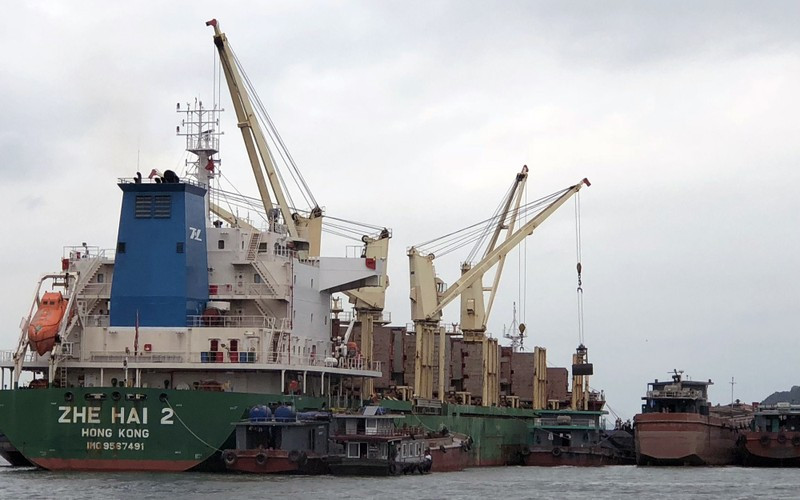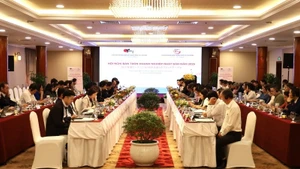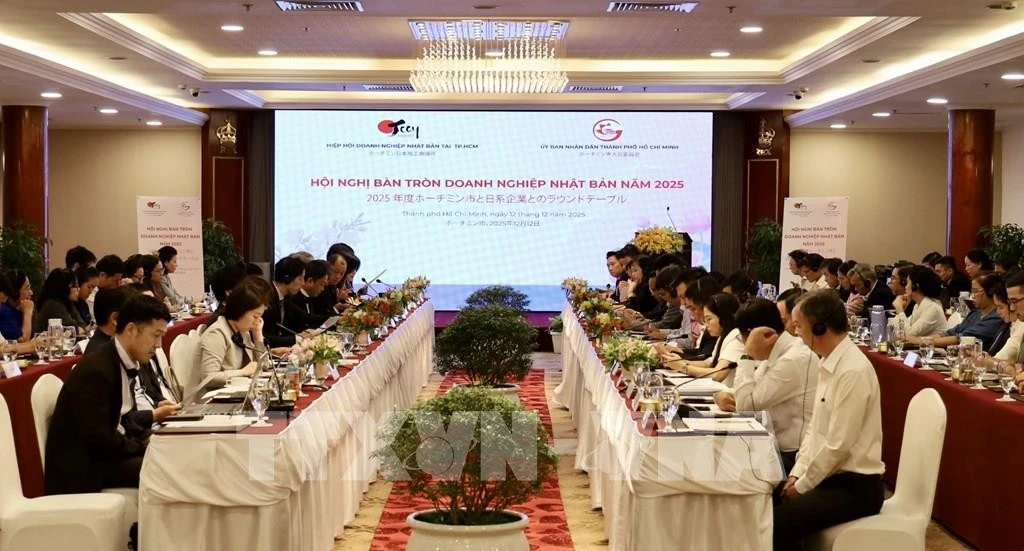In recent years, thanks to its favourable geographical location and modern transport infrastructure, along with the rapid development of industry, commerce and services, Quang Ninh has become one of the leading provinces in the northern region in terms of industrial and service development.
Identifying bottlenecks
Deputy Director of the Import and Export Department (Ministry of Industry and Trade) Tran Thanh Hai said that Quang Ninh needs an overall plan with specific tasks and should evaluate its strengths and limitations in developing logistics. In terms of infrastructure, Quang Ninh has had a large investment in roads and aviation, but the current seaports have yet to promote its full potential, and there are no worthy logistics centres to serve commercial activities in the border area.
Although there are many advantages, seaports in Quang Ninh still face many difficulties, leading to weak competitiveness. Most of the ports have excess capacity, and the volume of goods through the ports remains low. For example, despite having all the necessary factors to become a key general seaport area of Vietnam and the world, foreign shipping lines and shippers still hesitate to choose between Quang Ninh’s Hon Gai and Hai Phong seaports.
One of the biggest bottlenecks at the ports in Hon Gai area is the traffic connection to the port. The distance from Hon Gai to the northern provinces is longer than that from Hai Phong, leading to increased domestic transportation costs. In addition, maritime services in Hon Gai area only include shipping agent, ship towing, support services, and some simple services. Meanwhile, services that require high qualifications such as repairing and maintaining ship machinery, diving, surveying the hull of ships, and so on must use service facilities from Hai Phong.
Chairman of Quang Ninh Automobile Transport Association Le Van Thuyet shared that Quang Ninh only has planning of a seaport industrial park but there is no bonded warehouse to support logistics activities. Cities in Quang Ninh also do not have a container yard or warehouse of sufficient size to store bonded goods.
Quang Ninh has yet to build a specialised logistics centre to serve import-export, storage, yard, and transportation activities at seaports or border gates. Cargo transportation services in the province are still too dependent on roads without exploiting inland waterways and the existing port system. In addition, seaport and logistics service activities do not have package solutions with a lack of added services for shippers’ supply chains and lack of connection between exporters and logistics enterprises, affecting trade, production, and investment, including logistics services.
Director of the Vietnam Logistics Research and Development Institute Ho Thi Thu Hoa said that Quang Ninh needs to correctly identify and focus resources on taking advantage of its own potentials and advantages to promote logistics. It is easy to see the strength of Quang Ninh Province in having a complete and synchronous transport infrastructure connecting regions and inter-regions. The surveyed logistics service providers assessed that Quang Ninh has full potential to develop logistics services for e-commerce and cross-border logistics. But the province needs to further promote its strengths in international cooperation and regional linkage, especially in improving the quality of human resources.
Enhancing competitiveness
In order to overcome limitations and become a logistics centre of the northern region, Quang Ninh is gradually removing bottlenecks, especially by focusing on the development of infrastructure and human resources as well as mechanisms to support businesses operating in the field.
The province has put the Van Don-Mong Cai Expressway into operation, connecting with the previous inter-provincial highways to form a highway chain of nearly 600km, connecting Lao Cai, Hanoi, Hai Phong, Ha Long, Van Don, and Mong Cai. It now takes less than 3.5 hours to travel from Hanoi to Mong Cai International Border Gate, shortening the travel time by nearly half.
Director of Bee Logistics Corporation, Hai Phong Branch, Vu Ho Ninh said that the route has helped logistics businesses significantly reduce transportation time and optimise costs. The company has opened a representative office in Mong Cai. In the future, the company is interested in logistics centres in Quang Ninh that can make effective use of this route and persuade investors to choose Mong Cai as a transhipment location at the border area between Vietnam and China.
Quang Ninh will continue to invest in improving infrastructure with an expected allocation of over 45 trillion VND of public investment in the 2022-2025 period. Special attention is paid to speeding up the construction of seaports such as Van Ninh and Con Ong-Hon Net, infrastructure for the seaport industrial parks of Nam Tien Phong, Bac Tien Phong, Dam Nha Mac, and Hai Ha, and the road system linking the province with Bac Giang, Lang Son, Hai Duong, and Hai Phong.
Acting Chairman of the People’s Committee of Quang Ninh Province Cao Tuong Huy emphasised that the province will develop seven groups of solutions, including mechanism and policy building, logistics development and administrative reforms to develop economic zones and industrial parks, especially the Quang Yen coastal economic zone, Van Don economic zone, and Mong Cai border economic zone.
Quang Ninh has provided support for 39 projects related to logistics infrastructure and the Provincial People’s Committee also issued a list of 86 investment attraction projects in Quang Ninh by 2025, including 6 projects related to seaports, logistics services, and logistics infrastructure, accounting for 6.97% of total projects.
Quang Ninh also set the target to handle more than 122 million tonnes of cargo through ports and transport 250,000 – 300,000 passengers per year by 2025, with seaport services to contribute 1.2 - 1.5% of the province’s GRDP. The province is expected to have more opportunities for development, soon realising the dream of becoming a logistics centre of the northern region and a gateway for multimodal transportation connecting with China, Northeast Asia, and ASEAN.
















